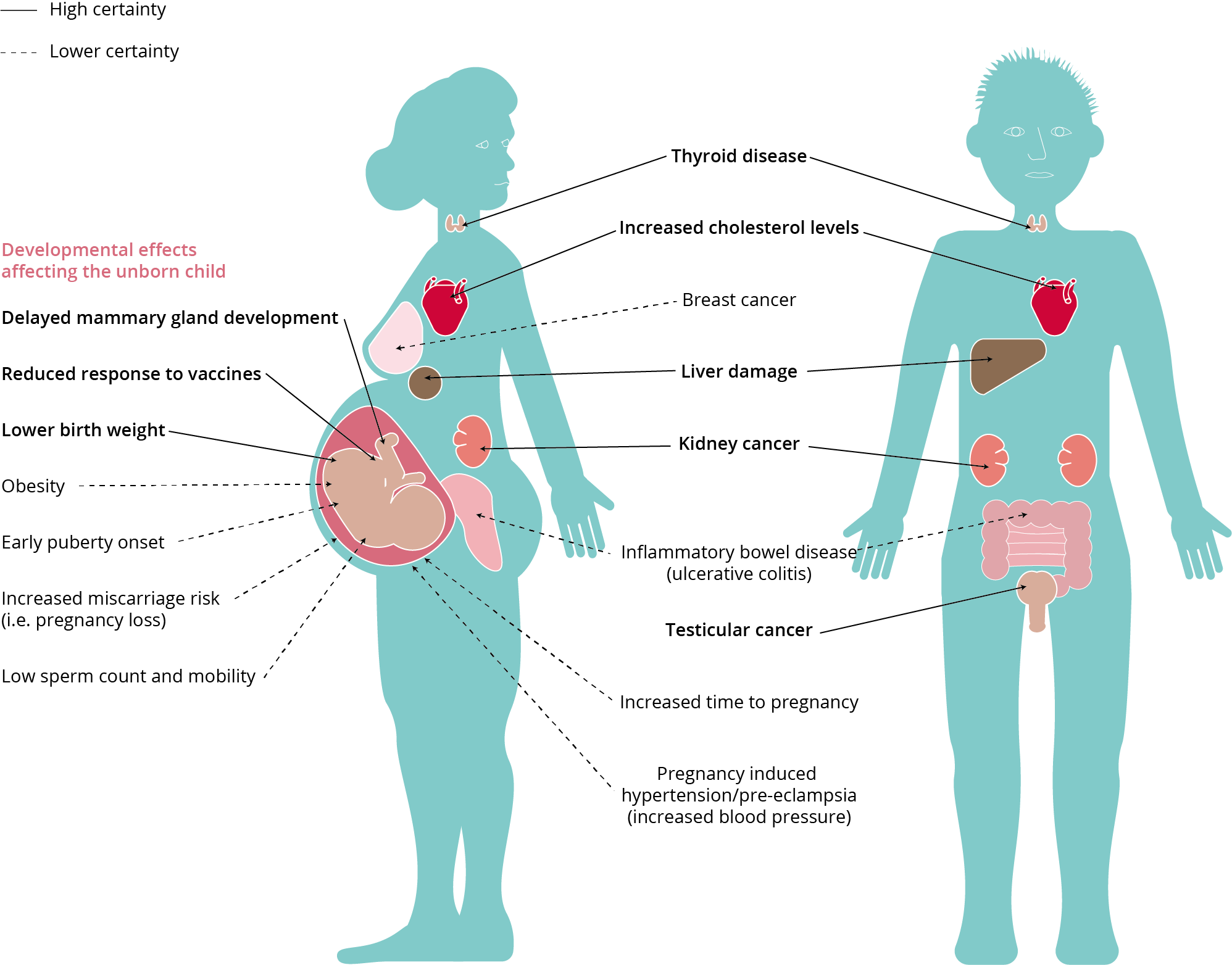Mercurcy, PFAS, and PCB in fish?

Fish has traditionally been thought of as healthy because it is a great source of lean protein, minerals like selenium, and omega 3, which is important for brain health and also anti-inflammatory.
However, it is safe to say that fish and seafood are not what they used to be 70 years ago before chemical production ramped up exponentially, especially in the US.

Significant chemicals discharged from urban, industrial, and agricultural sources have entered water bodies; our oceans and waterways are now contaminated with:
- Mercury from things like coal burning
- PCB/Dioxins from electrical manufacturing (and despite the fact these were banned in 1979, they are still widespread in our environment because these chemicals are known as persistent organic pollutants - they do not break down easily, persist in our environment, and accumulate up the food chain).
- Pesticides from agricultural runoff
- And now freshwater fish in the US have been found to contain PFAS - a group of 12,000 chemicals used to make products slipper (non-stick pans), water/stain resistant (clothing, carpet, and more)
It is no surprise then, that these chemicals have found their way into seafood, and the higher up the food chain (i.e. the bigger the fish) the higher the level.

So, is fish still healthy? Do the benefits still outweigh these potential pollutants?
This depends on your bio-individual nutritional needs, toxic load, detox capacity, and stage in your life. For example, pregnant women and children, or anyone with an already high toxic load should probably be more cautious than a healthy adult who is already taking steps to reduce their environmental exposure.
If you do not consume fish, you do need to be cognizant of omega-3 intake from other sources or even supplements if indicated.
You will find conflicting reports in the scientific literature - but the general consensus is that, despite all the bad press about toxicants found in fish, the benefit may still outweigh the risks - but in my opinion, much still depends on your personal detox capabilities, existing toxic load, and what fish you eat!
It is important to note that we are usually talking about non-lethal concentrations of these toxicants when it comes to fish and seafood - i.e. one serving is not likely to harm you, however, consistent, low-level exposures can accumulate over time if your detox capability is poor, or you have a high toxic load already.
What are the common contaminants found in fish? And what can you do to reduce your risks?
1) Mercury - this is a naturally occurring heavy metal in low levels, however, the majority of mercury in our environment now is a result of coal burning and mining activities. Mercury bio-accumulates up the food chain, meaning, when the bigger fish eat the little fish, the concentration of mercury in their bodies increases.
Mercury is a neurotoxin [1] and can affect our mitochondria (which produce energy for cellular function). Low-level, long-term exposure from eating contaminated fish in the context of poor detox capacity may affect our nervous system, energy levels, and brain health.
Children and pregnant women are most at risk from the health impacts of mercury exposure because methylmercury readily crosses the placenta, breast milk, and in small children, their brains are still developing and may be more susceptible to toxic levels.
What is toxic to me, however, may not be toxic to someone else. This is why I believe studies have NOT shown consistent, conclusive findings in this area. We all have different toxic loads and different detox capabilities.
Two people can ingest the same fish with the same mercury concentration but have very different outcomes.
Someone with a low toxic load, and actively supporting their detox organs will likely be less affected. But we do know this - gestational mercury exposure seems to be correlated with adverse neurological development in babies [3] whereas fish consumption was found to be beneficial. i.e. in someone with good detox capabilities, the benefit of consuming fish and the ingestion of healthy DHA/EPA outweighed the presence of mercury. So, context matters.
Someone with impaired gut health, poor liver function, or constipation will likely have a higher blood level of mercury when they ingest contaminated fish, than someone who has optimal detox pathways.
What to do:
- Choose lower mercury fish - use the acronym SMASH:
- Sardines (though these may contain PCB)
- Mackerel
- Anchovies
- Salmon (go for wild-caught if you eat it, farmed salmon can be high in PCB/dioxins/pesticides)
- Herring
- If you are pregnant, check out this guide from the FDA.
- Support your detox organs - Methylmercury (the type of mercury in fish) is mainly processed in the liver and eliminated via poop - so work on your detox pathways to enhance its elimination. I don't recommend using supplements unless you know exactly what you are using them for, and the contaminants in your supplements - many 'detox supplements' are laden with heavy metals themselves, adding to your toxic load.
2) PCB/Dioxins - these are potent endocrine disrupters (mess up our hormones) and have been associated with insulin resistance and type 2 diabetes, polycystic ovary syndrome, fertility issues, and even certain cancers like breast cancer. It does not break down easily, so it can build up in our bodies and has been found in human breast milk - hence the importance of pregnant/nursing moms taking more caution.
What to do:
- Avoid the fatty parts of fish (e.g. belly, internal organs) and trim the skin where these lipophilic compounds like to concentrate. Avoid bottom feeders like catfish and lobster in contaminated water bodies, and avoid the tomalley if you do eat it.
- Avoid farmed fish, which tends to be higher in PCB/dioxins, and reduce the consumption of fried fish (because these toxins are fat-loving, which means they can get into the cooking oil and contaminate the rest of the food fried in the same oil - a common practice in restaurants/takeouts.
- A lot of people tout sardines as a low mercury fish, but as you can see in the table below - they can be a source of PCB, so a safer alternative might be anchovies. In general, if you eat fish, change up the varieties that are low in mercury instead of sticking to just one type e.g. wild salmon, herring, anchovies, and so on.
(source: Mozaffarian D, Rimm EB. Fish Intake, Contaminants, and Human Health: Evaluating the Risks and the Benefits. JAMA. 2006;296(15):1885–1899. doi:10.1001/jama.296.15.1885)

3) PFAS - also known as 'forever chemicals' because they stick around in the environment 'forever', this family of chemicals is now widespread in the environment due to its extensive use, release, and disposal in cookware (non-stick coating), water/stain proofing, for the last 2 decades. As a result, the CDC biomonitoring program has found that 97% of Americans had PFAS in their bodies - a frightening statistic given its widespread health implications.
PFAS has been found [4] to be associated with fertility, thyroid issues, high cholesterol, liver/ kidney issues, certain cancers, and more.

What to do:
Despite headlines, fish and seafood are NOT the primary sources of PFAS (not yet anyway).
We (hopefully) drink around 2 L of water per day, making contaminated water one of the main sources of PFAS, followed by cookware, and indoor air/dust from furniture, carpet, and clothing treated with PFAS.
- If you are in the US, reach out to your municipal water supplier and ask them if they test for PFAS and to share this information with you. If they do not test (it is not legally required yet) - you can test for this yourself. I use Tapscore to test both city and well water.
- If you do have PFAS in your drinking water, investing in a water filter that has been demonstrated to remove PFAS effectively may be a suitable next step if finances allow, and a preferable option to buying bottled water which tends to be expensive over the long term, and tends to be poorly regulated so there is no reassurance on the quality of water. My preferred water filter company is linked here and you can use my affiliate code "platefulhealth" to get 10% off. I also like Aquatru - this link gets you $150 off.
- Switch out your cookware - some of my favorite options can be found here.
- Damp dust frequently with a wet rag to remove dust particles that have been found to carry PFAS (and we breathe these in all the time), invest in a quality air filter, and vacuum frequently to keep your indoor air clean, especially in the bedroom or in the room where your baby/children play on the floor.
If you want to know the products I use in my own home, check out my favorite products here*.
If you want to learn how to support your detox organs the science-based way using simply, every day steps with food in your kitchen and lifestyle strategies, join me in my signature course Detox Right.
*I'm an affiliate for some of the products linked on my website. I get asked about products I use and love all the time, and by being an affiliate, I can negotiate discount codes to share with you, plus earn a small commission if you use my code or link to purchase. This helps me to continue providing free educational content on my platforms, thank you so much for your support.
References:
[1] Branco V, Aschner M, Carvalho C. Neurotoxicity of mercury: an old issue with contemporary significance. Adv Neurotoxicol. 2021;5:239-262. doi: 10.1016/bs.ant.2021.01.001. Epub 2021 Feb 2. PMID: 34263092; PMCID: PMC8276940.
[2] Kim B, Shah S, Park HS, Hong YC, Ha M, Kim Y, Kim BN, Kim Y, Ha EH. Adverse effects of prenatal mercury exposure on neurodevelopment during the first 3 years of life modified by early growth velocity and prenatal maternal folate level. Environ Res. 2020 Dec;191:109909. doi: 10.1016/j.envres.2020.109909. Epub 2020 Jul 12. PMID: 32871452.
[3] Oken E, Wright RO, Kleinman KP, Bellinger D, Amarasiriwardena CJ, Hu H, Rich-Edwards JW, Gillman MW. Maternal fish consumption, hair mercury, and infant cognition in a U.S. Cohort. Environ Health Perspect. 2005 Oct;113(10):1376-80. doi: 10.1289/ehp.8041. PMID: 16203250; PMCID: PMC1281283
[4] https://www.eea.europa.eu/publications/emerging-chemical-risks-in-europe

